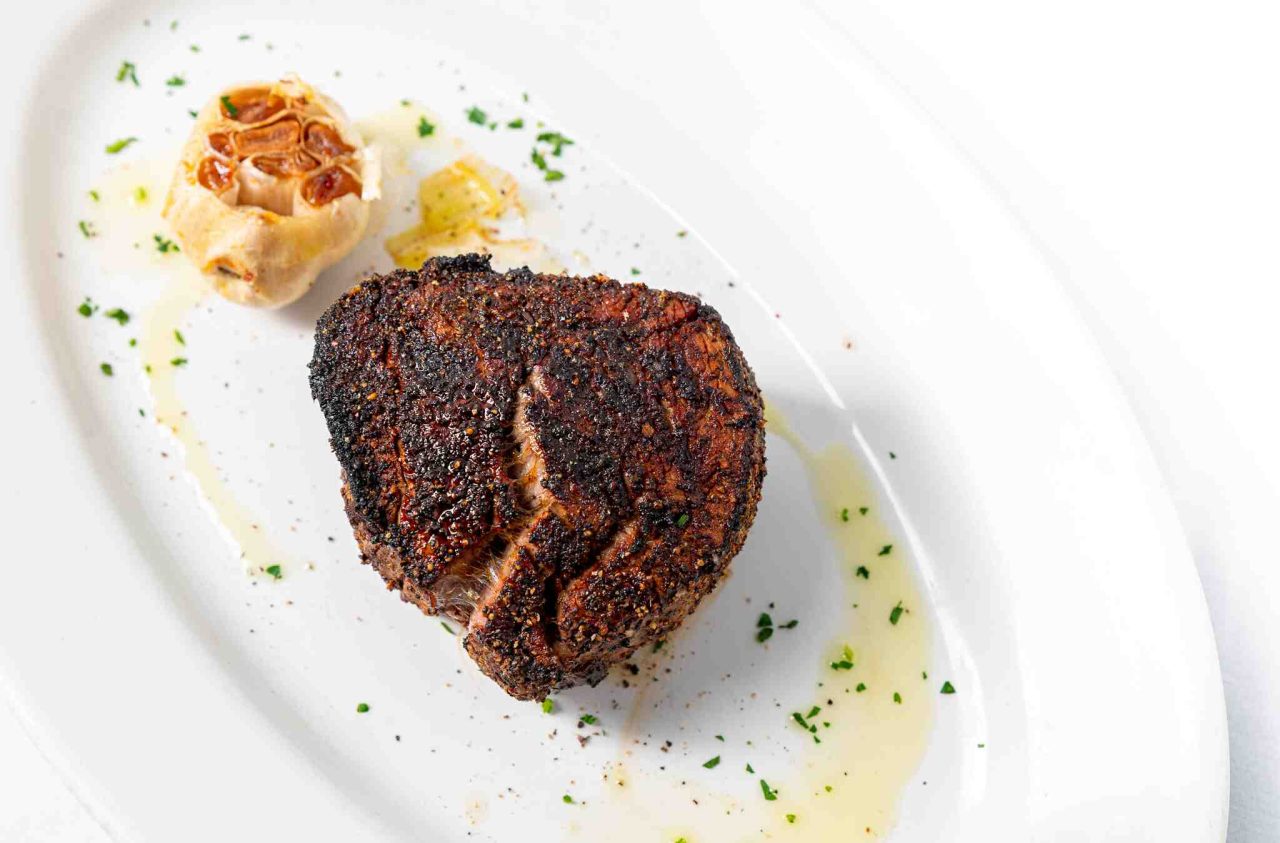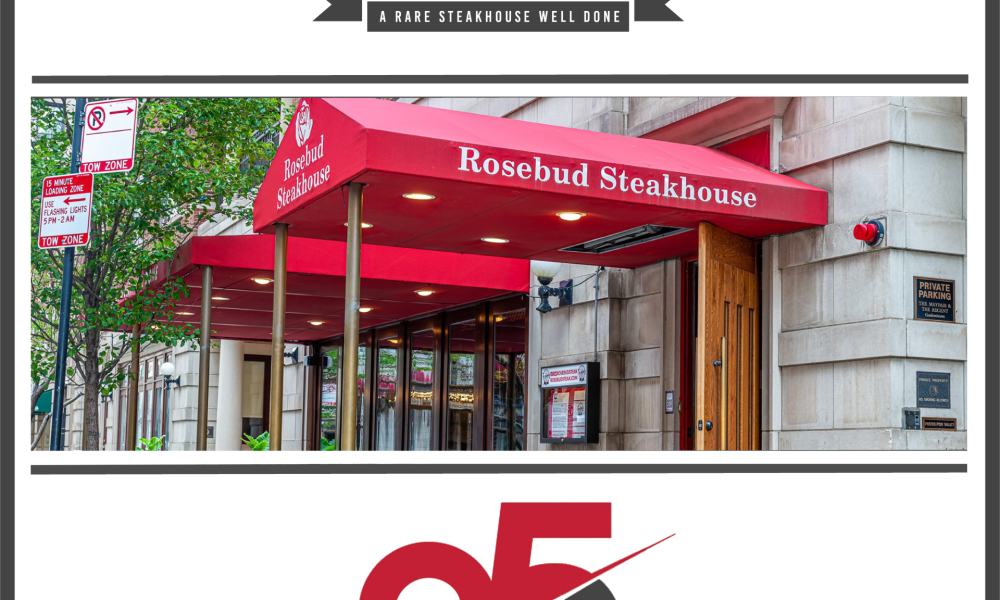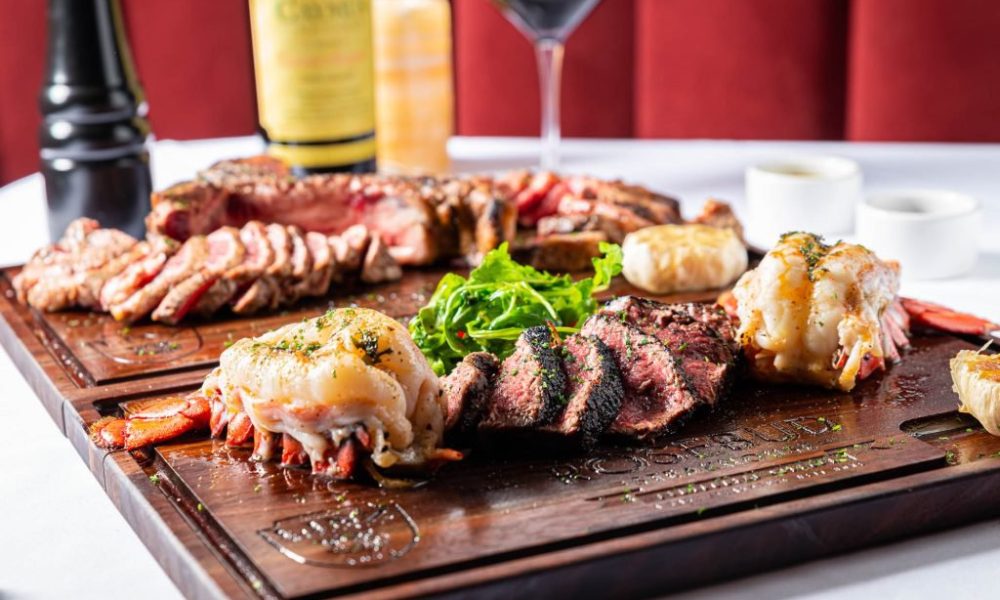Dry aging is a process where meat, especially steak, is stored in a special environment for several weeks. The meat is kept cool and controlled, which makes it taste better and become more tender. The flavor becomes richer and the texture improves as enzymes break down tough fibers. The meat also develops a slight crust that locks in juices when cooked. Dry aging enhances the eating experience, making each bite more delicious. If you’re still interested after reading all that, here’s what you need to know:
What is Dry Aging?
Dry aging is a process where beef is stored in a controlled environment for several weeks. This allows natural enzymes to break down the meat’s fibers, enhancing its flavor and tenderness. The beef is kept at a low temperature and humidity, which helps it develop a rich, concentrated taste. The outer layer of the meat dries out and is later trimmed off. Dry-aged steak is known for its superior taste and texture, making it a favorite among steak lovers.
Why Dry Age at Home?
Dry aging steak at home has many benefits:
- Cost Savings: It’s cheaper to buy and age your own steak than to purchase pre-aged steaks from a store or restaurant.
- Control: You can monitor and adjust the aging process to suit your taste preferences.
- Quality: You select the best cuts of meat and ensure they are aged in a clean, controlled environment.
Selecting the Right Cut of Beef
Best Cuts for Dry Aging
- Ribeye: A popular choice for dry aging because of its rich marbling and flavor.
- Strip Loin: Known for its tenderness and beefy taste, it ages well and develops deep flavors.
- Sirloin: Offers a good balance of tenderness and flavor, making it a great option for dry aging.
These cuts have the right amount of fat and muscle to benefit from the dry aging process, resulting in a tastier and more tender steak. Check out our expert guide on how to cook ribeye steak in the oven.
Choosing High-Quality Beef
When dry aging a steak at home, start with high-quality beef. Look for USDA Prime or Choice grades, as these have the best flavor and tenderness. Check the marbling, which is the white fat running through the meat. More marbling means a juicier and more flavorful steak. Good fat content is crucial because it keeps the meat moist during the aging process. Choosing the right cut, such as ribeye or strip loin, also helps ensure a delicious result.
Expert Tip: Choosing the Best Cut
According to chefs from our Rosebud Steakhouse, the best cuts for dry aging are well-marbled ones like ribeye and strip loin. These cuts have the right amount of fat, ensuring the steak remains juicy and flavorful after the aging process. Contact us online or visit us today to speak with our expert.
Preparing Your Refrigerator for Dry Aging
- Necessary Equipment
To dry age a steak at home, you need a dedicated mini-fridge or a spare refrigerator. This is important to keep the steak at a constant temperature. You’ll also need a wire rack and a baking sheet. The wire rack allows air to circulate around the steak, and the baking sheet catches any drips.
- Setting Up the Fridge
Start by thoroughly cleaning and sanitizing your fridge to ensure a safe environment for the meat. Make sure there is proper airflow inside the fridge. You can place a small fan inside to keep the air circulating. This helps to maintain a consistent temperature and humidity level, which are crucial for dry aging.
Setting Up the Dry Aging Environment
Temperature and Humidity Control
To dry age a steak at home, keep the temperature between 34°F and 38°F. Use a dedicated fridge to maintain this range. Control humidity levels between 80% and 85% to prevent the meat from drying out too quickly. A small fan can help circulate air and keep conditions stable.
Air Circulation
Good airflow is crucial when dry aging a steak at home. Proper air circulation helps prevent mold and bacteria from growing on the meat. To ensure this, use a small fan in your fridge to keep the air moving. This will help the steak age evenly and safely.
Maintaining Optimal Conditions
Experts from Rosebud Chicago recommend setting up your fridge at a consistent temperature between 34-38°F (1-3°C) for dry aging steak. Use a small fan for proper airflow and monitor humidity around 80%. Change the wrapping every few days to prevent mold and ensure the best results.
Aging the Steak: Duration and Conditions
Recommended Aging Times
Dry aging steak requires patience. The minimum aging period is 14 days. This is enough time to start developing flavors. For the best results, aim for 21 to 45 days. This period gives the steak a rich, deep taste. The longer you age, the more intense the flavor becomes.
Monitoring the Process
It’s important to regularly check the temperature and humidity in your fridge. The temperature should be between 34-38°F (1-3°C), and the humidity should be around 80%. Use a thermometer and a humidity gauge to monitor these conditions. Also, inspect the steak for mold and spoilage. A little white mold is normal and you can trim it off, but if you see green or black mold, discard the steak.
Expert Tip: Monitoring Your Steak
Chefs from Best Steakhouse Chicago suggest looking for a dark, even color on the steak. This indicates proper aging. The steak should also have a firm texture. If you notice any off smells or slimy textures, it means the steak has spoiled and should not be eaten.
Trimming and Preparing the Aged Steak for Cooking
Trimming the Aged Beef
When your steak has finished aging, it’s time to trim it. Start by removing the dried outer layer. This part can be tough and not pleasant to eat. Use a sharp knife to carefully cut away this outer layer. Also, trim any excess fat and any parts that look undesirable. This will leave you with the best part of the steak.
Seasoning and Resting
Season the steak with salt and pepper. Simple seasonings let the flavor of the aged beef shine. Before you cook the steak, let it come to room temperature. This helps it cook more evenly.
Preparing Your Steak for Cooking
Experts of Chicago Steakhouses recommend trimming carefully and seasoning generously. They say proper trimming and seasoning are key to a perfect steak.
Cooking Your Dry Aged Steak to Perfection
Cooking Methods
- Grilling: Preheat your grill to high heat. Sear the steak for 2-3 minutes on each side, then move it to a cooler part of the grill to finish cooking.
- Pan-searing: Heat a heavy skillet over high heat. Add a bit of oil, then sear the steak for 2-3 minutes per side. Finish in the oven if needed.
- Oven-roasting: Preheat your oven to 400°F (200°C). Sear the steak in a hot pan for 2-3 minutes per side, then transfer the pan to the oven for 6-10 minutes.
Tips for Best Results
- Use a meat thermometer to check doneness. Aim for 130°F (54°C) for medium-rare.
- Rest the steak for 5-10 minutes after cooking to let the juices redistribute.
Cooking Like a Pro
- Step-by-step guidance from Steakhouses in Chicago chefs:
- Season the steak generously with salt and pepper.
- Sear in a hot pan until a crust forms.
- Finish in the oven for even cooking.
- Let the steak rest before slicing.
Troubleshooting Common Issues
When dry aging steak at home, you might encounter a few common problems. Excessive mold growth can happen if there’s too much moisture or not enough airflow in the aging environment. To prevent this, adjust the humidity levels and ensure proper airflow around the steak. Unpleasant odors can also occur if you do not properly wrap the meat or if you do not keep the fridge clean. Keep your aging space clean and change the wrapping regularly to avoid these issues.
Restaurants in Munster Indiana expert recommend keeping a close eye on your steak during the aging process. Adjust temperature and humidity as needed, and maintain good sanitation practices in your aging environment. By troubleshooting these issues early, you can ensure your dry-aged steak turns out delicious and safe to eat.
Conclusion:
Mastering the art of dry aging steak at home takes time and attention to detail, but the results are well worth the effort. By following this guide, you’ll enjoy steakhouse-quality meals in the comfort of your home. And for those nights when you want to leave it to the experts, visit one of our Rosebud Steakhouse locations: Magnificent Mile, Centennial Village.
FAQ for How to Dry Age a Steak at Home
Can you dry age steak at home?
Yes, you can dry age steak at home with the right equipment and careful monitoring.
Can I dry age steak in my fridge?
You can dry age steak in a dedicated fridge with controlled temperature and humidity.
How are steaks aged without spoiling?
Steaks are aged by placing them in a controlled environment with low temperature and humidity, which helps develop flavor without spoiling.
How do they dry age steaks?
Steaks are dry aged by placing them on racks in a fridge, allowing them to naturally tenderize and intensify flavor over time.
How is dry aged steak not rotten?
Dry aged steak is protected from spoiling by the controlled fridge environment, which regulates temperature and humidity to prevent bacterial growth.
How long is it safe to dry age steak?
It’s safe to dry age steak for 14 to 60 days, depending on your desired flavor intensity and tenderness. Longer aging can enhance flavor.







